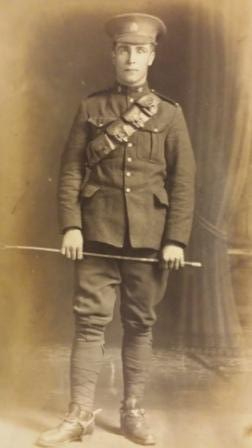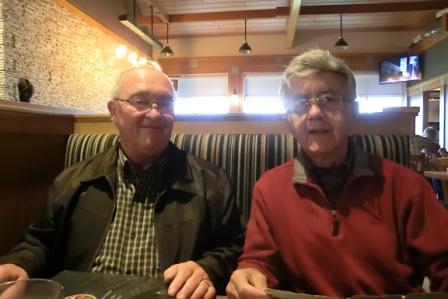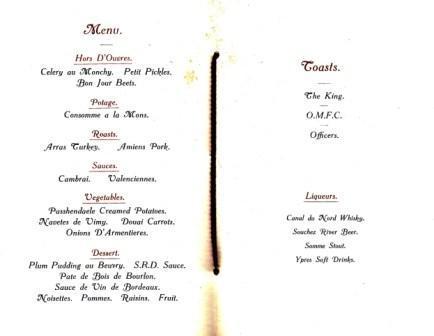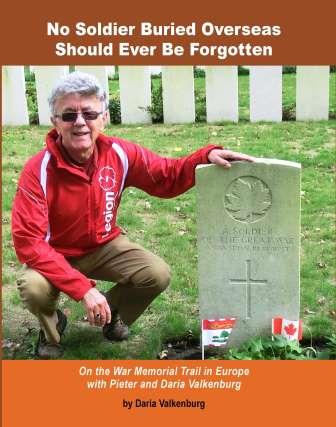May 5, 2022. Those of us of a certain age…. pre-internet days… may remember the admonition when travelling to ‘send us a postcard’. This request came particularly from parents and grandparents. If you were having a good time, writing out cards was the last thing on your mind.
But there was a solution – pre-filled postcards where all you had to do was check the appropriate boxes and fill in the address the card should be sent to. It let the receiver know you had safely arrived, and gave a chance to make a few comments or observations by ticking a series of boxes. During a trip to New Zealand, I remember ticking a box that said ‘there are more sheep here than people’. At the time there were 3 million people and 9 million sheep!
…A Field Post Card was an easy way to say I’m still alive….
During WWI, soldiers were kept busy trying to stay alive. Not all had the time or inclination to write extensive letters, and so the Field Post Card came in handy, especially to let loved ones know when a letter or parcel arrived, or to give a brief update on the soldier’s well-being.
The Field Post Card, known as an f.s.p. or a ‘whizz bang’, allowed soldiers to strike out messages that didn’t apply. No extra notes were allowed, except for dates, or the card would be destroyed.

Harold Keith Howatt. (Photo courtesy of South Shore United Church)
Even WW1 soldier Harold Keith HOWATT of Augustine Cove, an active correspondent, sent these Field Post Cards when he received a letter or parcel while serving with the 8th Canadian Siege Battery.

Field post card dated October 18, 1917 from Harold Howatt, advising he received a parcel. (Courtesy of the H. Howatt collection)

The Field Post Card of October 18, 1917 from Harold Howatt was mailed a day later. (Courtesy of the H. Howatt collection)
Harold Howatt noted in his October 18, 1917 Field Post Card that he had received a parcel that had been sent a month earlier, that a letter would be coming soon, and that he was ‘quite well’.
…What Harold Howatt couldn’t say in his Field Post Card….
What he wasn’t able to say was where his unit was stationed – La Bassée, France, located southwest of Lille and about 16 km (ten miles) from the Belgian border.

Map showing La Bassée, where the 8th Siege Battery was located at the time Harold Howatt send his Field Post Card. (Map source: http://www.google.ca)
In ‘The Secret History Of Soldiers’ historian Tim Cook noted that the Field Post Cards allowed soldiers to communicate at a time when it was difficult to explain the horrors that they were experiencing. A prewritten card with no information that might help the enemy, such as location, was also quicker than regular mail as it bypassed censors. “… The cards were a stopgap measure in between letters and they were commonly sent after a battle by exhausted soldiers...”
“…The phrase ‘I am quite well’ serves as an ironic comment on the difficulty soldiers had in finding the words to describe their unique experiences...”
Howatt recorded in his notes what he didn’t include in his Field Post Card….
On Monday, September 24, 1917 he wrote “…Slept in a straw loft last night, did not sleep very well as there was a rat running around through the straw all night…”
After this sleepless night he wrote that they “…. started to shoot at 2:30 pm. Ranged in 12 rounds, then we stopped firing until aviator ranged another battery. Started in again and fired pretty steady until 9:50 pm….”
On Tuesday, October 2, 1917 he noted that they had been woken up at midnight. “…All of a sudden, a terrific racket started. The Germans were pouring H. E. and gas shells into the village in front of the Fosse. About a thousand shells came in altogether….We did not bother putting our gas masks on as we were so high up. The bombardment lasted about one hour…” H.E. referred to high explosives.
On Thursday, October 18, 1917, Howatt recorded that “… we expect to hand over guns, stories, and everything to another battery…..”
On October 30, 1917 he wrote it was “…the date of leaving for the real war…” Indeed they did. They set up base in Poperinghe, Belgium, to participate in the latter part of the Third Battle of Ypres – which we know as the Battle of Passchendaele – a battle that ended on November 17, 1917. (See https://en.wikipedia.org/wiki/Battle_of_Passchendaele)
So, if you have WW1 postcards in your possession take a look and see if you have any Field Post Cards! Photos or information to share? Email Pieter at memorialtrail@gmail.com, comment on the blog, or tweet to @researchmemori1.
…Previous stories about Harold Howatt’s WW1 observations….
- https://onthewarmemorialtrail.com/2021/02/12/on-the-war-memorial-trail-the-ww1-soldier-who-hoped-to-go-home-after-his-service-in-germany-ended/
- https://onthewarmemorialtrail.com/2020/07/03/the-ww1-era-course-of-the-rhine-map-of-germany/
- https://onthewarmemorialtrail.com/2020/04/29/the-ww1-soldier-who-went-to-post-ww1-germany/
- https://onthewarmemorialtrail.com/2020/04/20/one-soldier-records-his-observations-during-the-last-few-days-of-world-war-i/
- https://onthewarmemorialtrail.com/2018/12/13/christmas-at-the-front-during-ww1/
- https://onthewarmemorialtrail.com/2017/09/14/visiting-the-tunnels-at-vimy-ridge/
…Want to follow our research?….
If you are reading this posting, but aren’t following the blog, you are welcome to do so. See https://onthewarmemorialtrail.com/ or email me at dariadv@yahoo.ca and ask for an invitation to the blog.
 Daria’s book ‘No Soldier Buried Overseas Should Ever Be Forgotten‘ is available in print and e-book formats. For more information see https://nosoldierforgotten.com/
Daria’s book ‘No Soldier Buried Overseas Should Ever Be Forgotten‘ is available in print and e-book formats. For more information see https://nosoldierforgotten.com/
You are also invited to subscribe to our YouTube Channel: On The War Memorial Trail With Pieter Valkenburg: https://www.youtube.com/channel/UCJ591TyjSheOR-Cb_Gs_5Kw.
© Daria Valkenburg





















 4 countries, 6 weeks, 7,000 km – an unforgettable war memorial journey in Europe….
4 countries, 6 weeks, 7,000 km – an unforgettable war memorial journey in Europe….